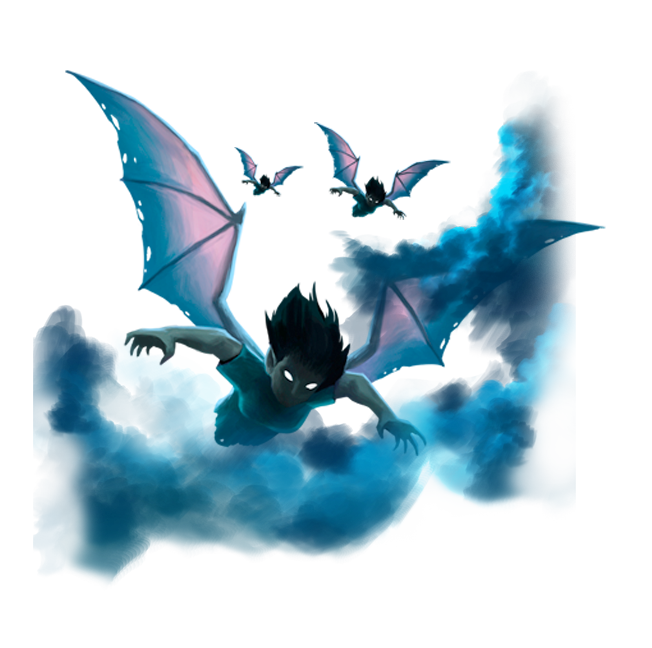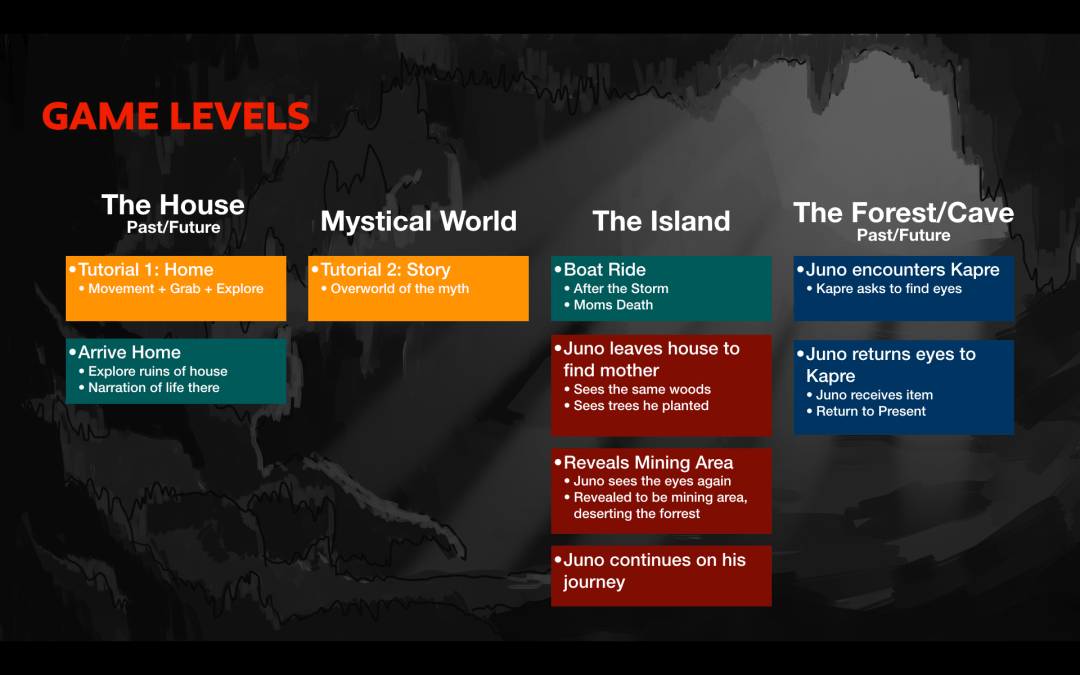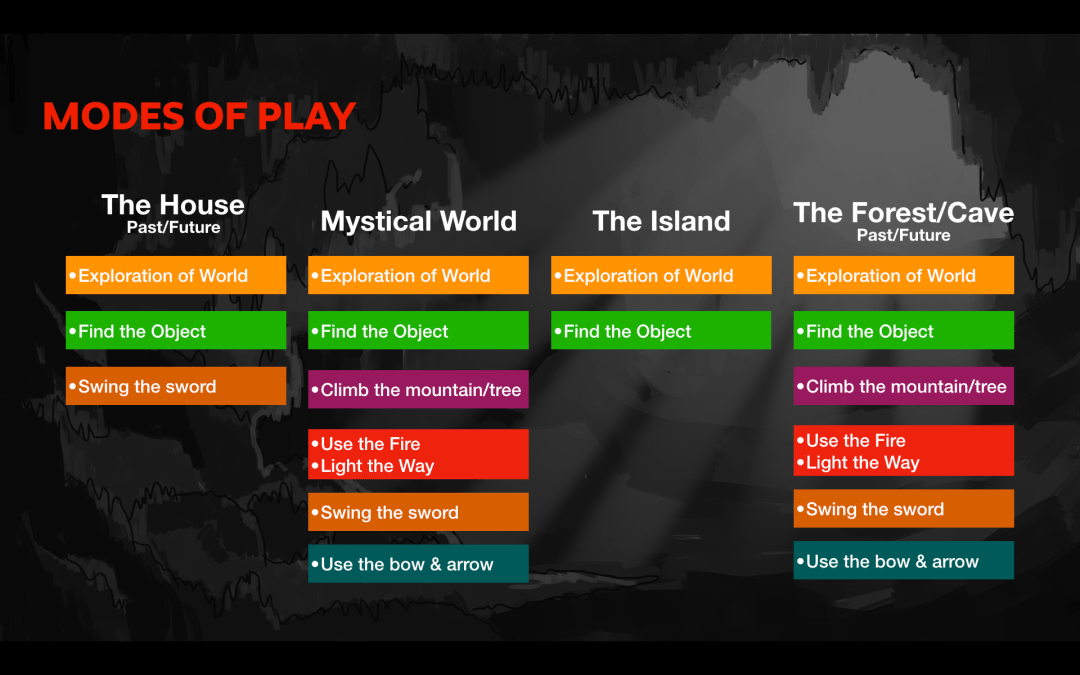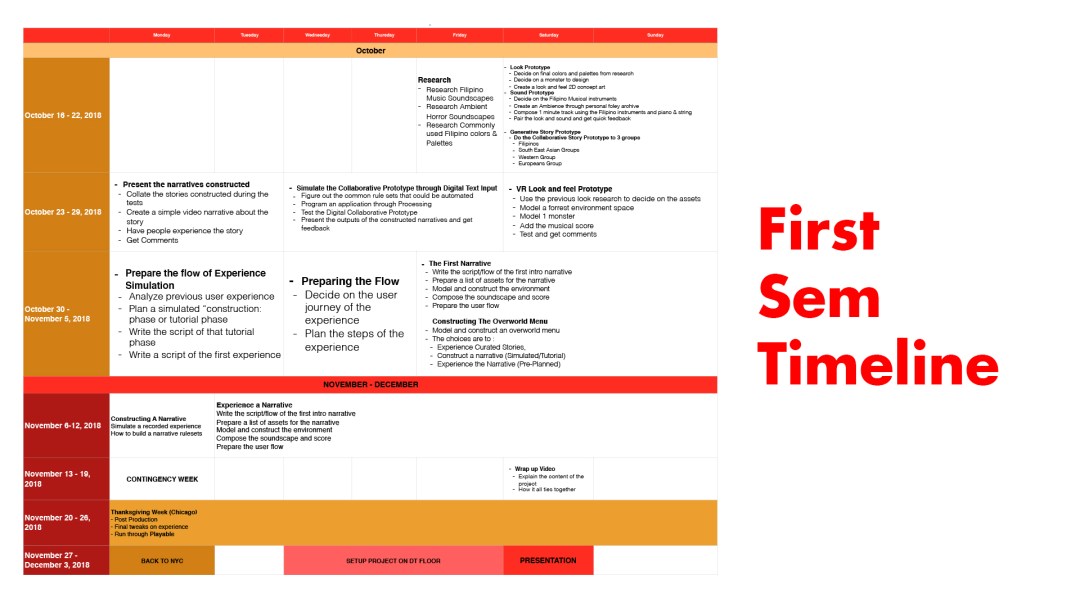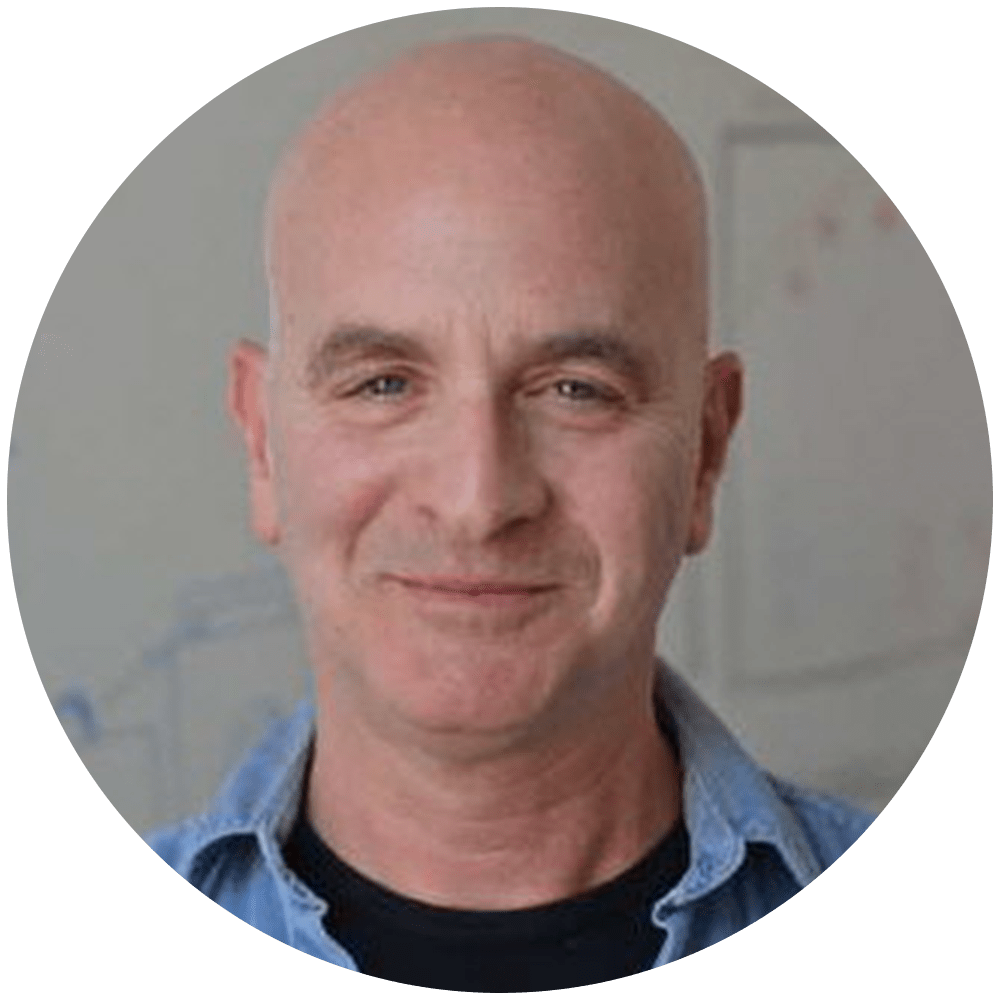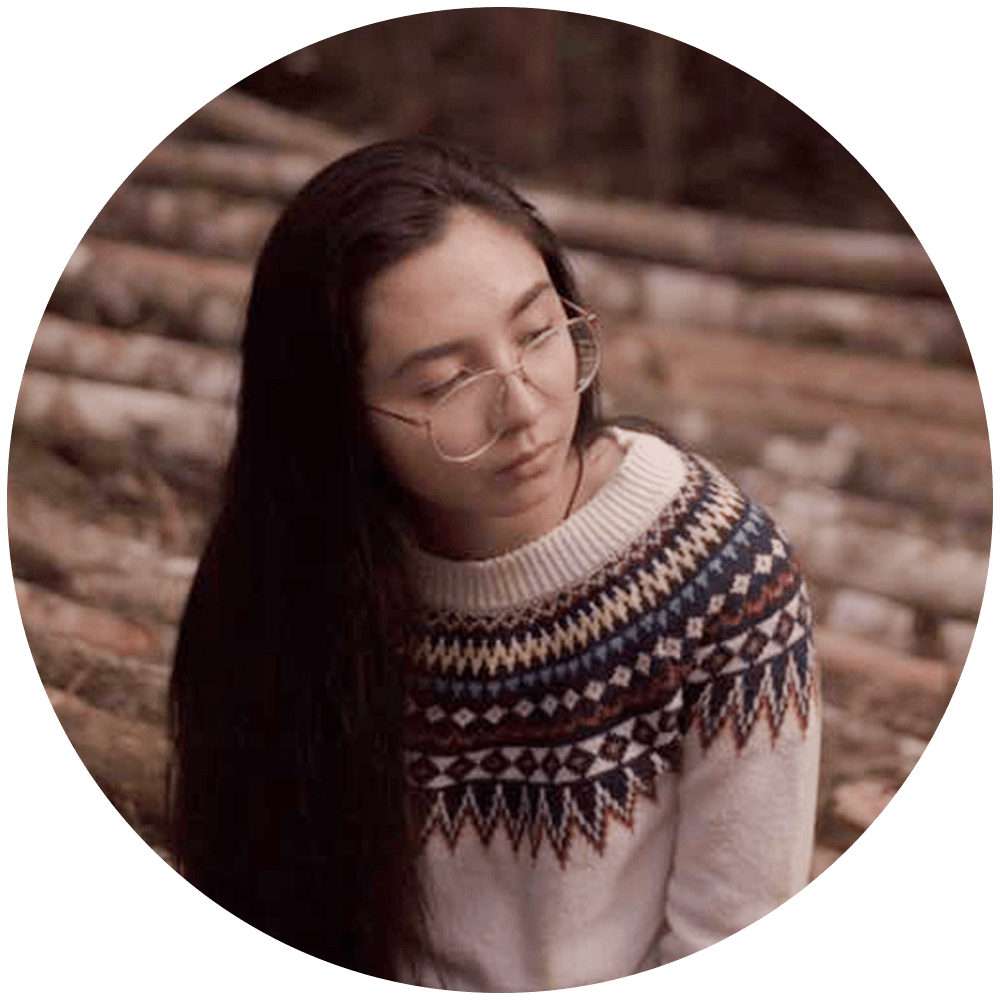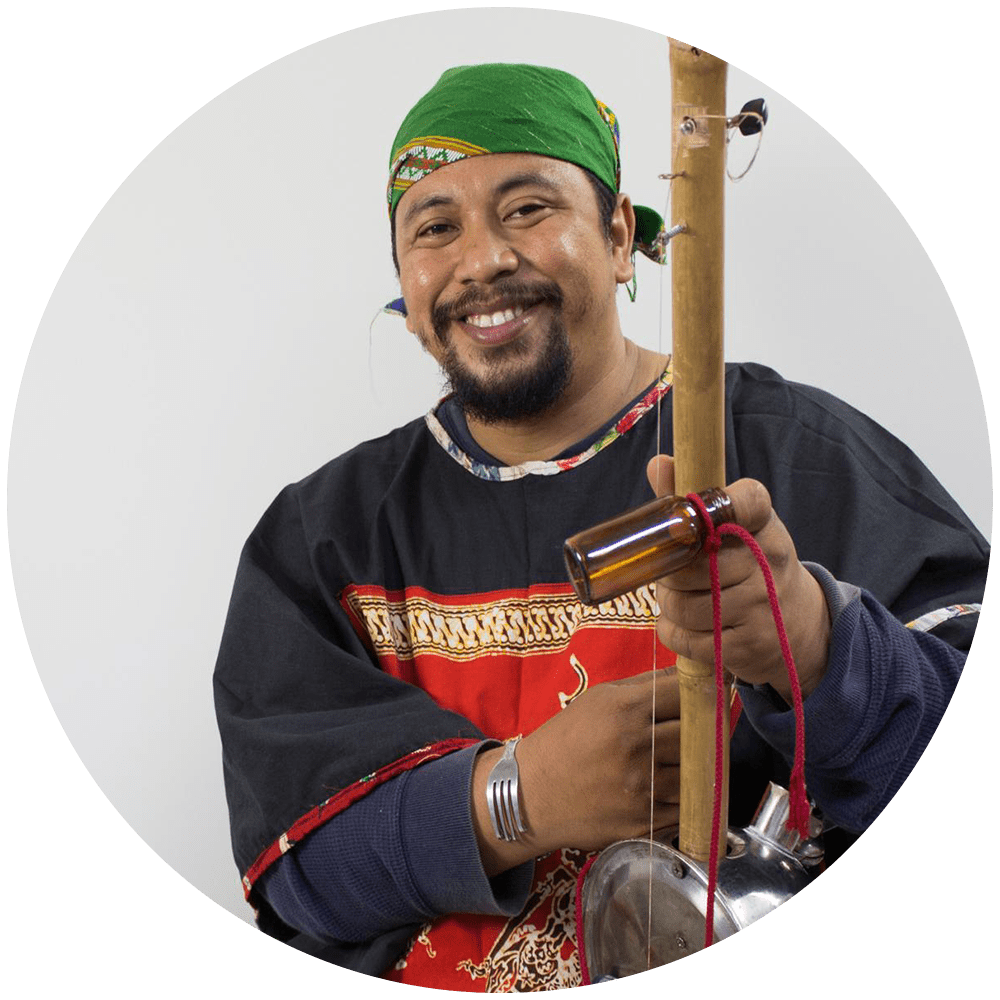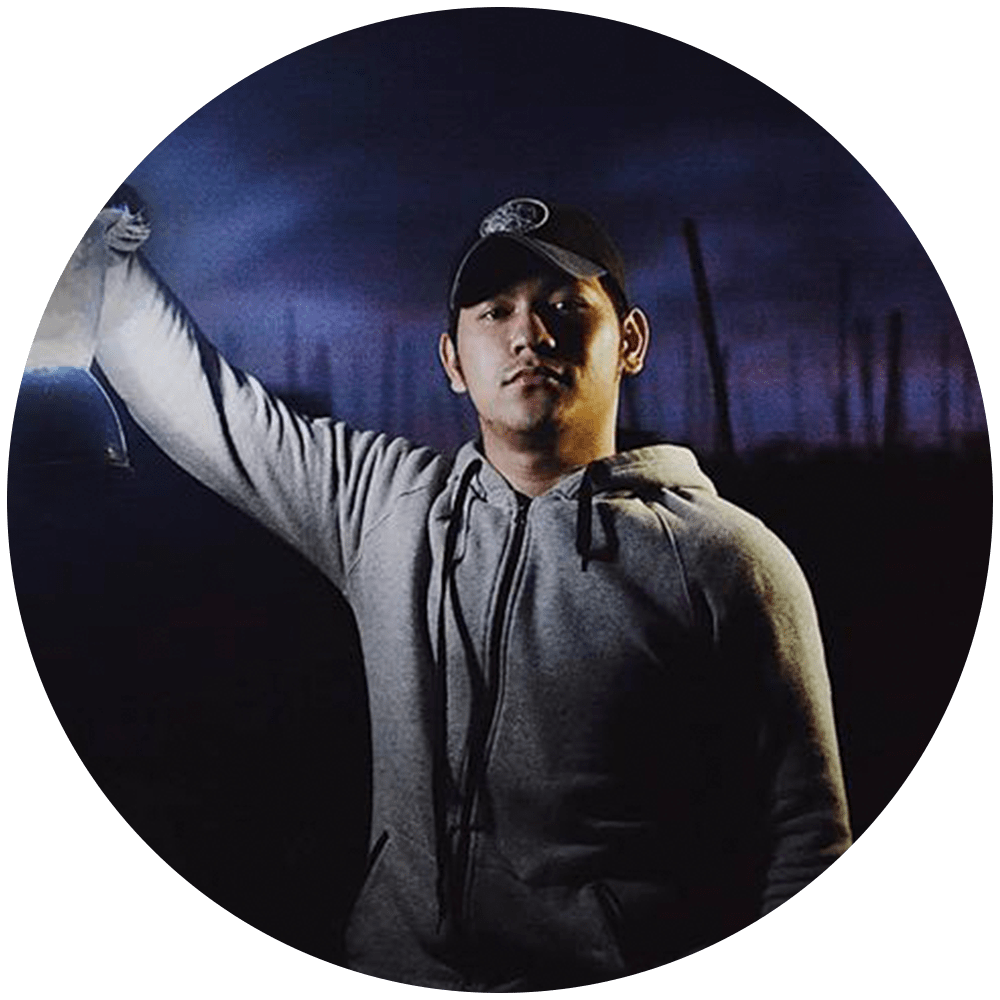
What is an Aswang?
Creatures that terrorize and strike fear upon Philippine locals as well as the collective term relating to the numerous supernatural beings present within Philippine mythology.

Why Filipino Monsters?
“Monsters are humanity’s shadows which we project. They represent our inmost fears and the projected ugly desires and repressions. Monsters in Filipino Folklores are archetypes which powerfully capture the collective consciousness of Filipinos”
– From Jungian Psychology applied on Myths
The Philippines has 7000 islands, each with unique differences. The northern islands have more Spanish influence from colonization, while the middle and southern islands have stronger connections to their pre-colonial past. Nowadays, traditional and colonial influences have merged together.
American and Japanese cultures have also influenced the Filipino people. Despite these changes, the Aswang remains a common link among Filipinos, connecting them to their Filipino identity.
Dr. Maximo Ramos who did his dissertation on the Aswang shares the same sentiment:
“It is sad to note that while we accept these stories as entertaining to our children, we reject our own folk tales about equivalent characters as superstitious and undesirable. It is about time that we changed our perspective that we accepted our own literary heritage and used it if we are to make education meaningful to our children.”
.
Research
Research for Tales of the Aswang led me to hundreds and thousands of sources, from websites to storybooks and Ph.D. dissertations. Here are 3 sources I wish to share where I started my initial search.
The Aswang Phoenomenon
A Canadian produced Documentary about the famous Filipino mythical bogeyman named “Aswang” and how it relates to the present folklore tales in the Philippines.
The Aswang Complex
A series of books on Philippine mythological monsters by Dr. Maximo Ramos.
The Aswang Project
The Aswang Project was created as an educational resource to share the rich and diverse culture of the Philippines.
The Outline
The project's initial story was inspired by a tale I heard as a child.
It's about a mischievous boy who gets trapped in a Kapre's world after stumbling upon it in the woods. The boy learns the value of caring for the environment by completing tasks set by the Kapre. After returning home, he carries this new sense of care with him.
I researched several stories and interweaved different narratives, 7 Aswangs were introduced into the story, namely: The Kapre, The Manananggal, The Duwende, The Tikbalang, The Nangangatok, The Nuno sa Punso, The Engkanto, and the Sirena. Other Aswangs were also included but will not directly affect the VR game's protagonist. They may only influence secondary aspects of the main character's journey by chance.
CONCEPT ART
Creatures, Characters, Environments and Monsters
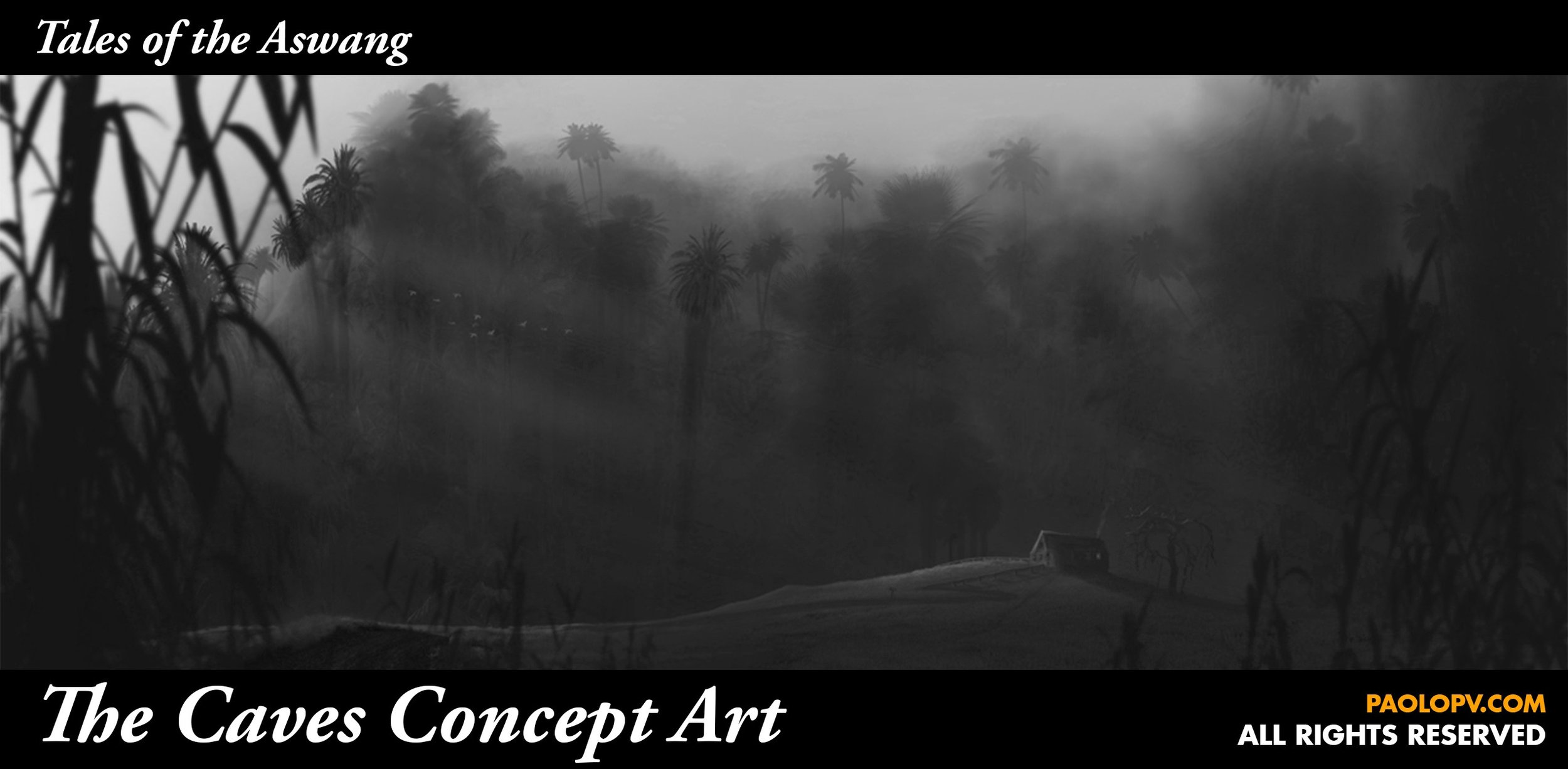
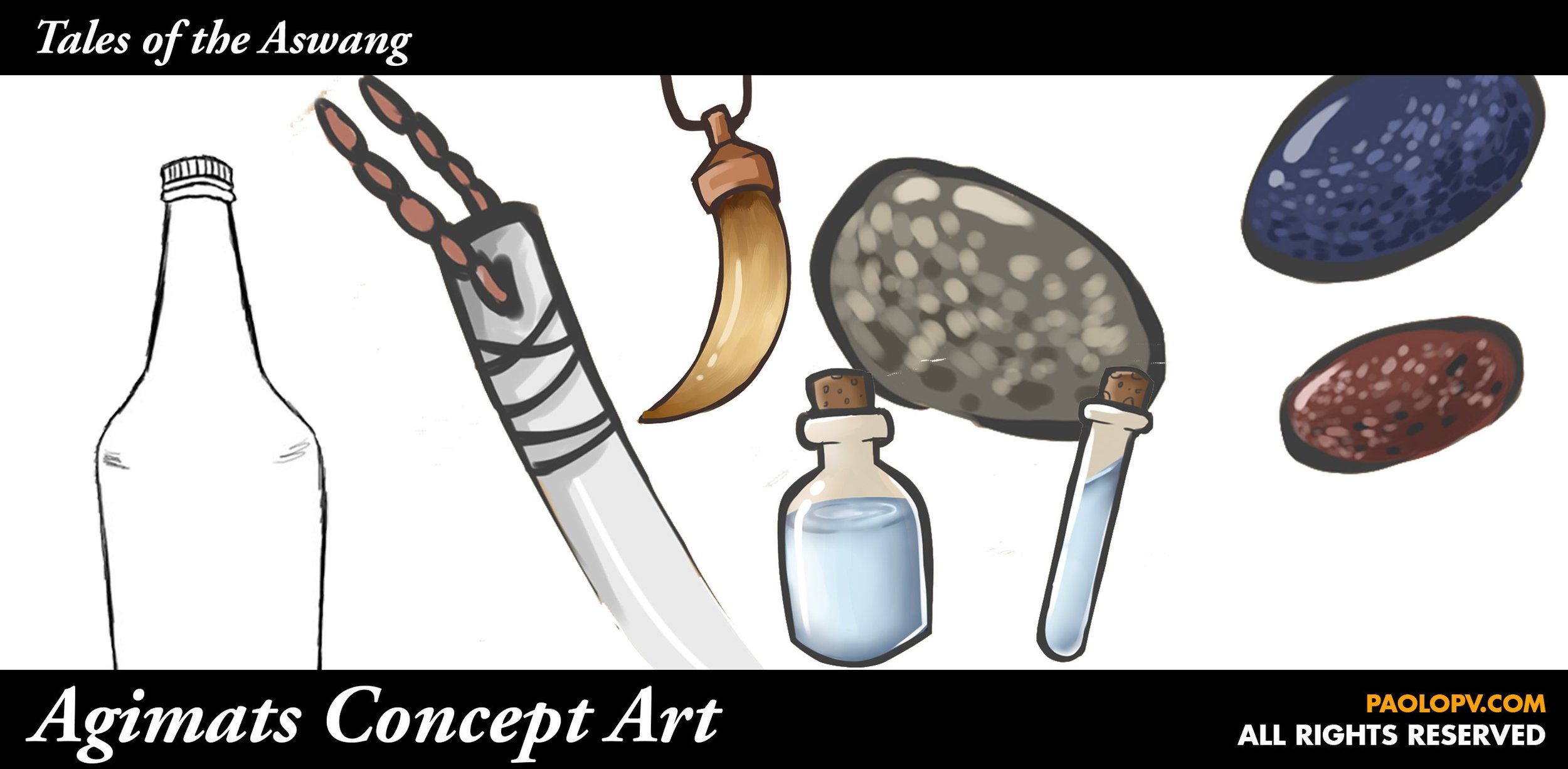
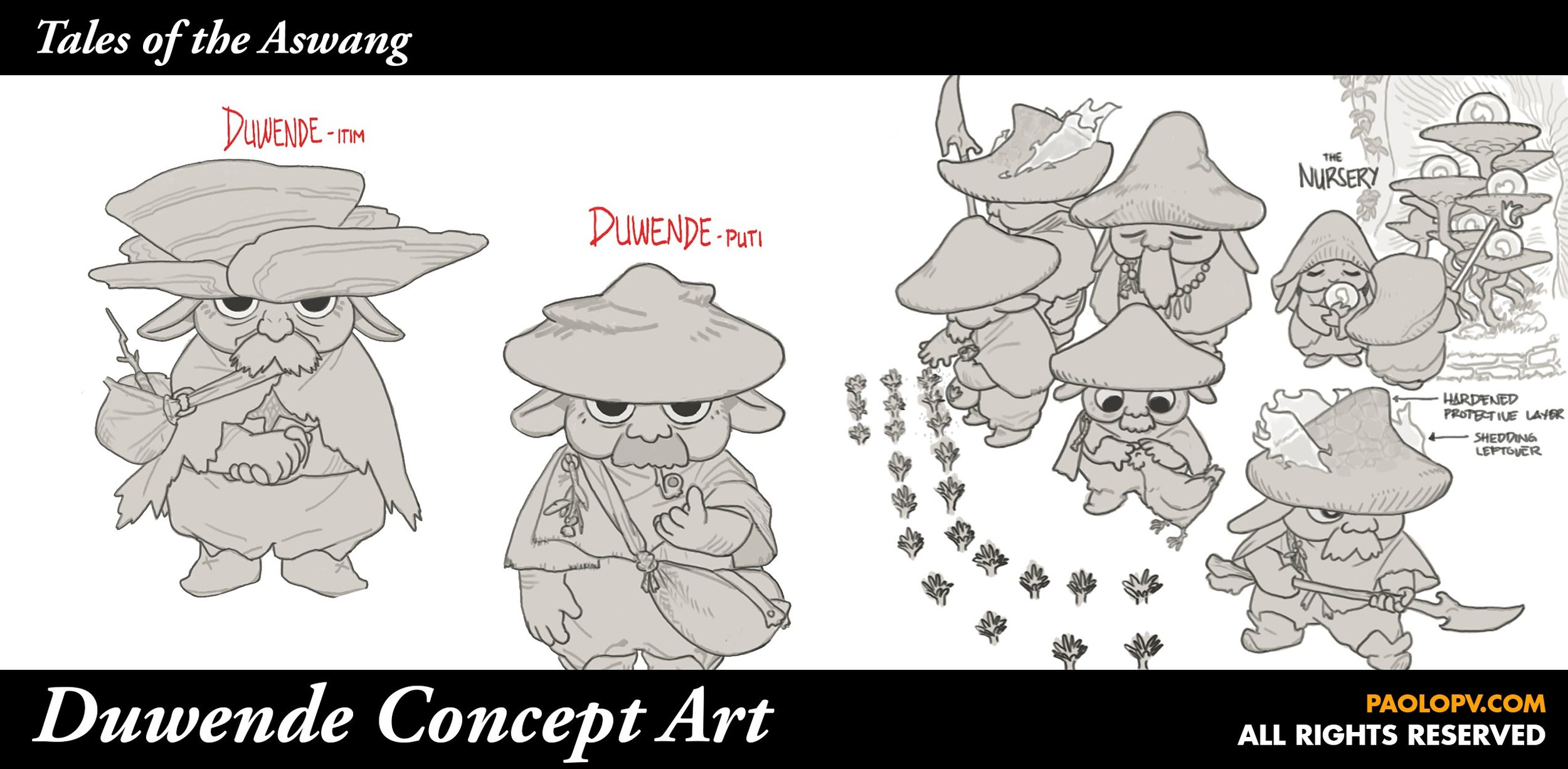
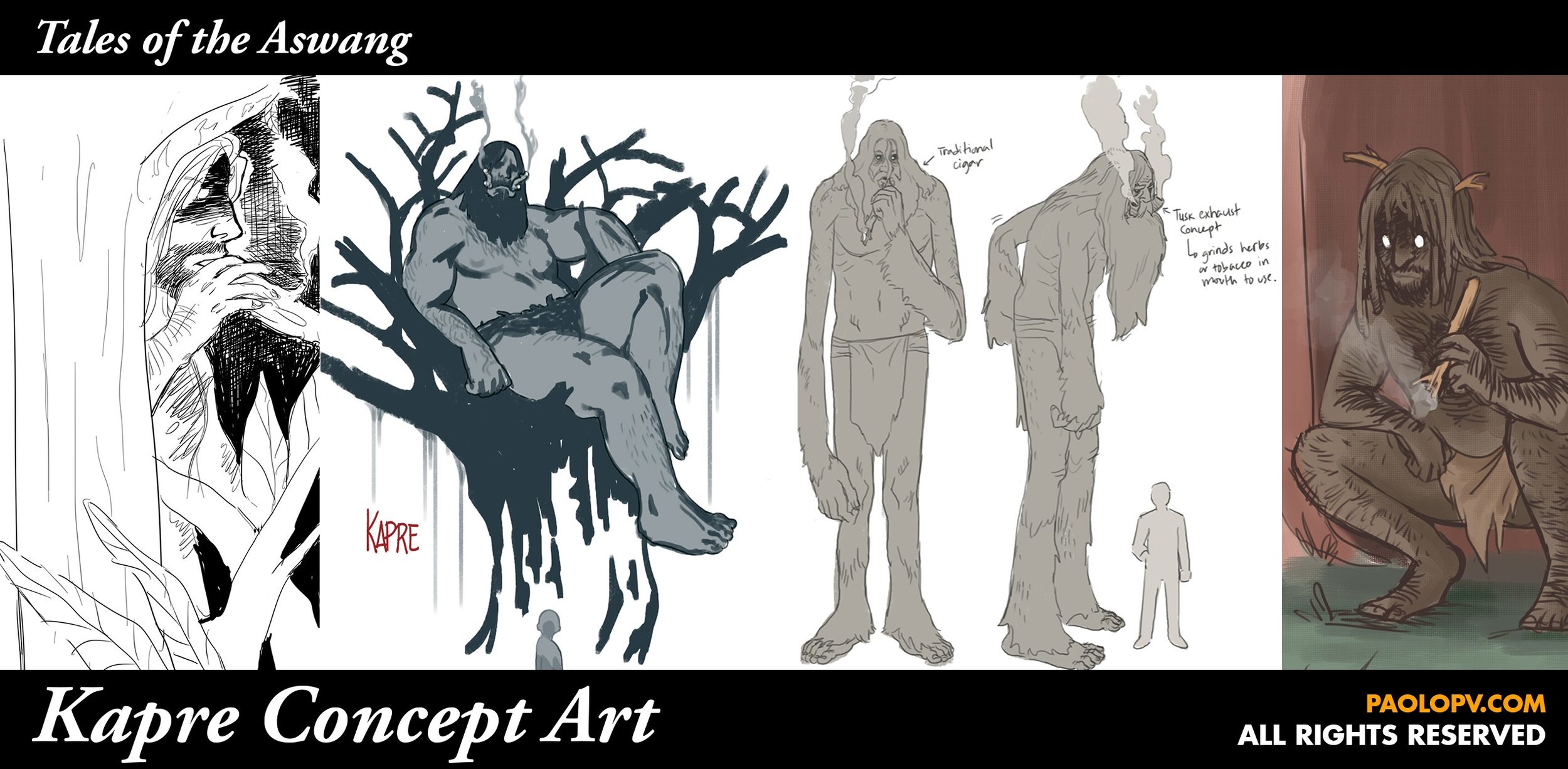
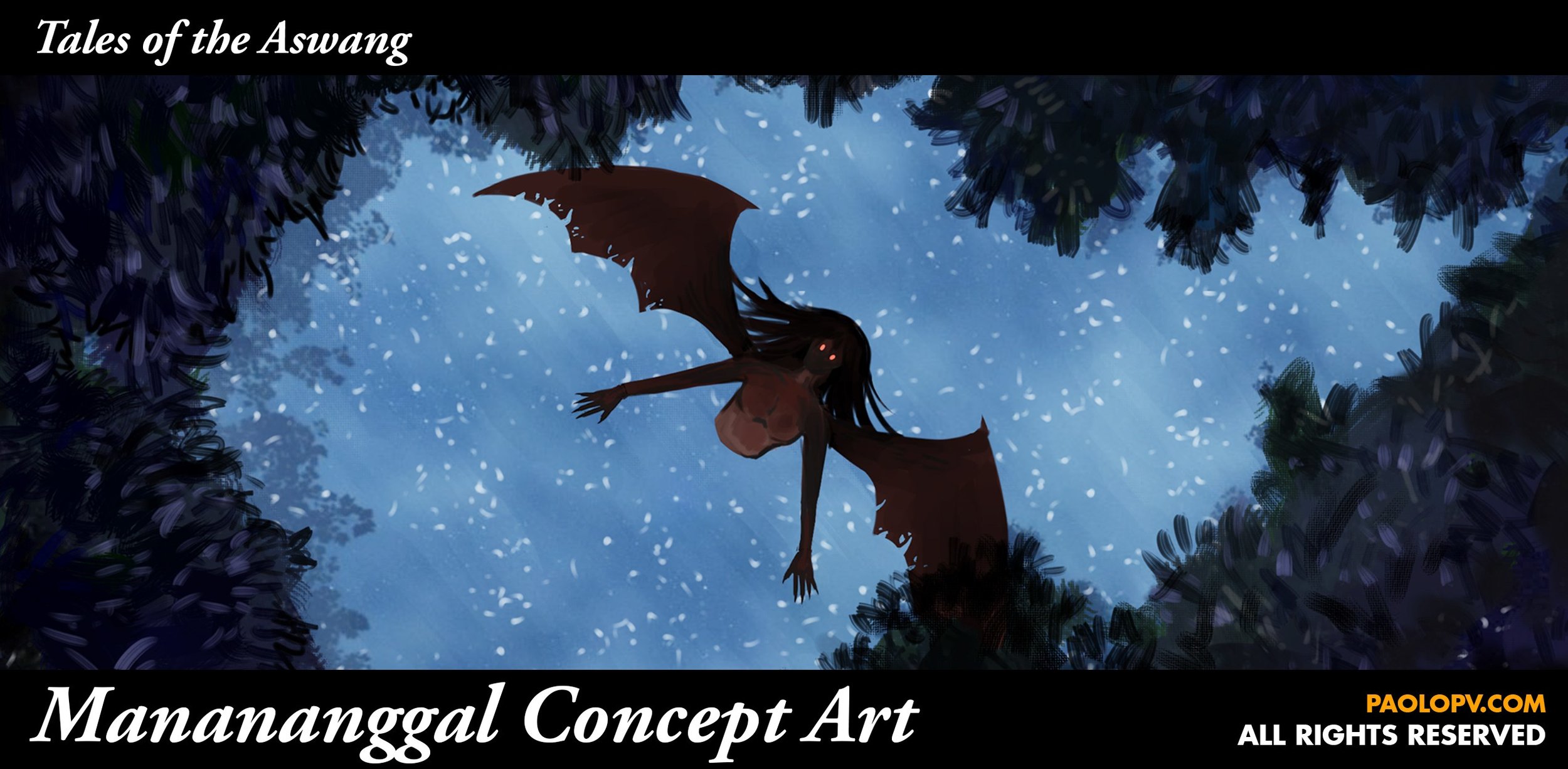
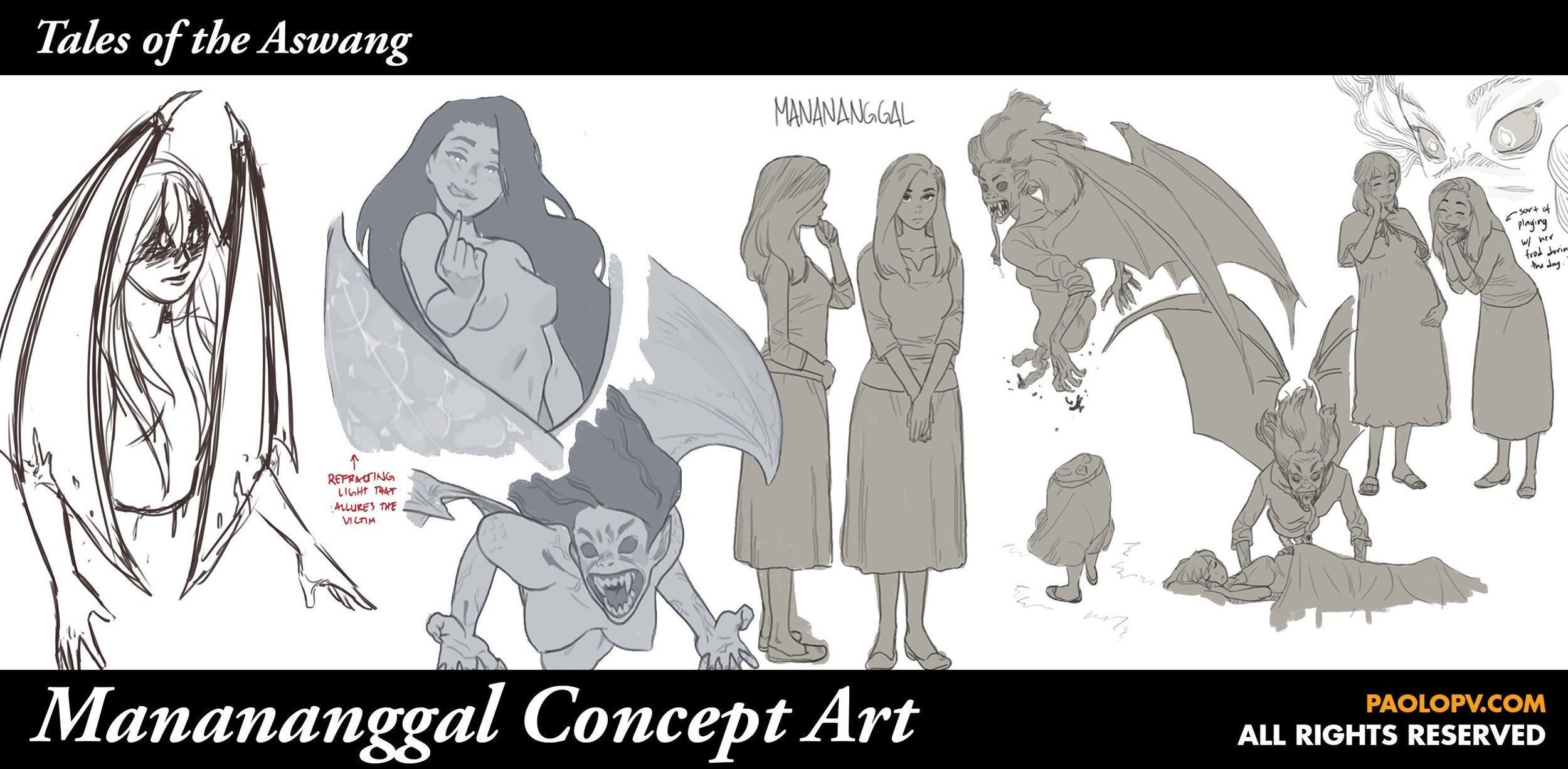

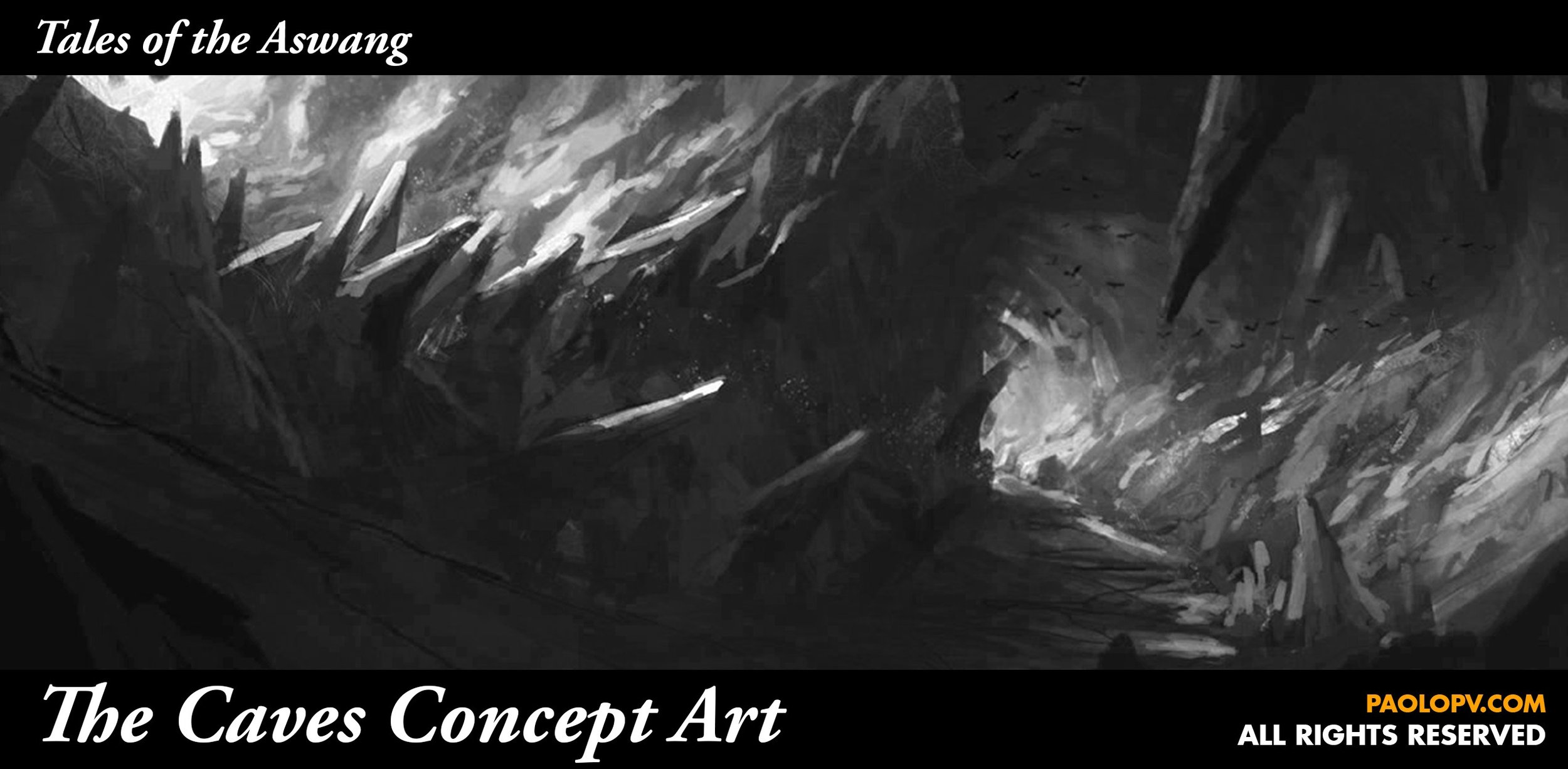
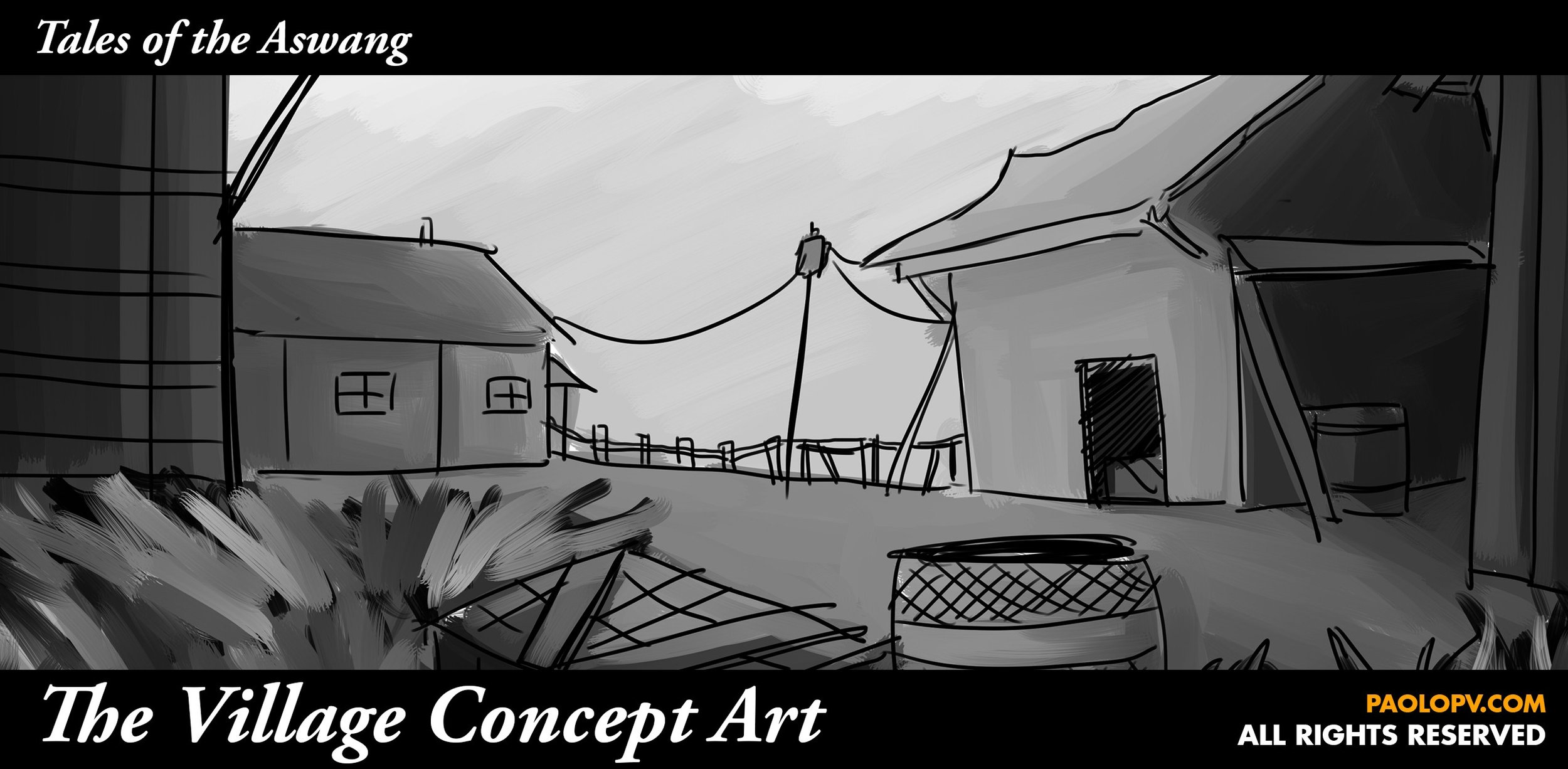
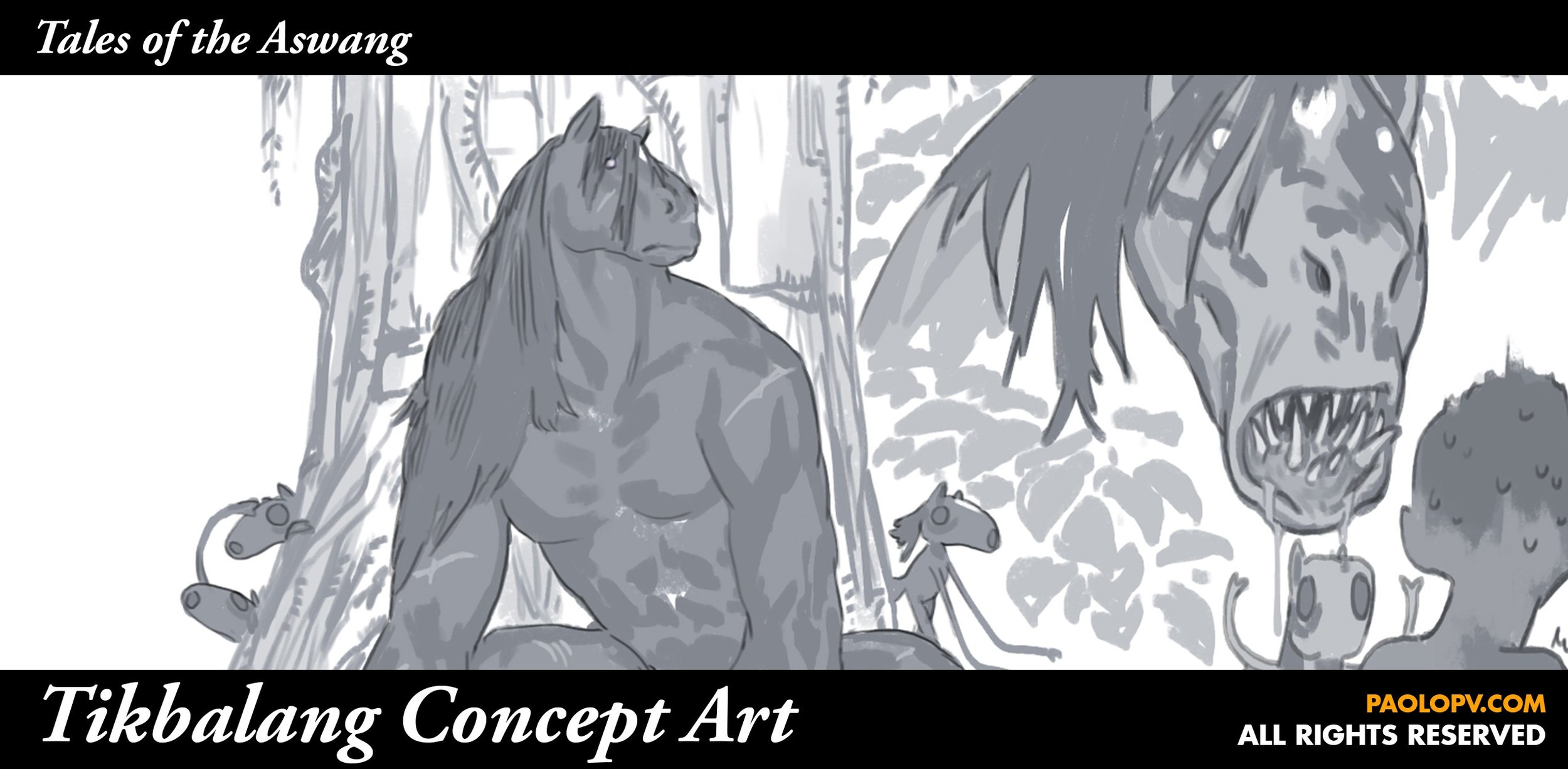
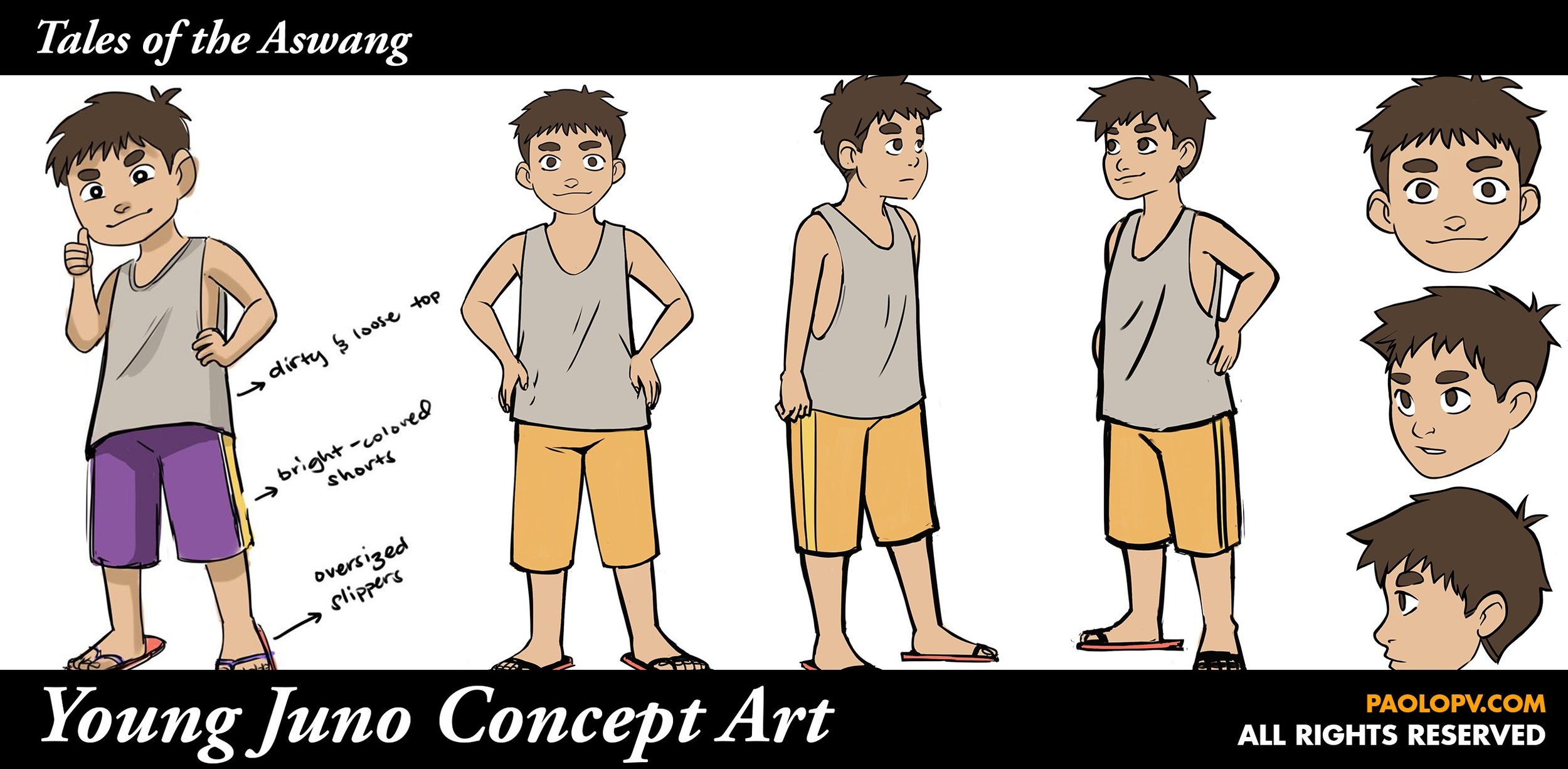
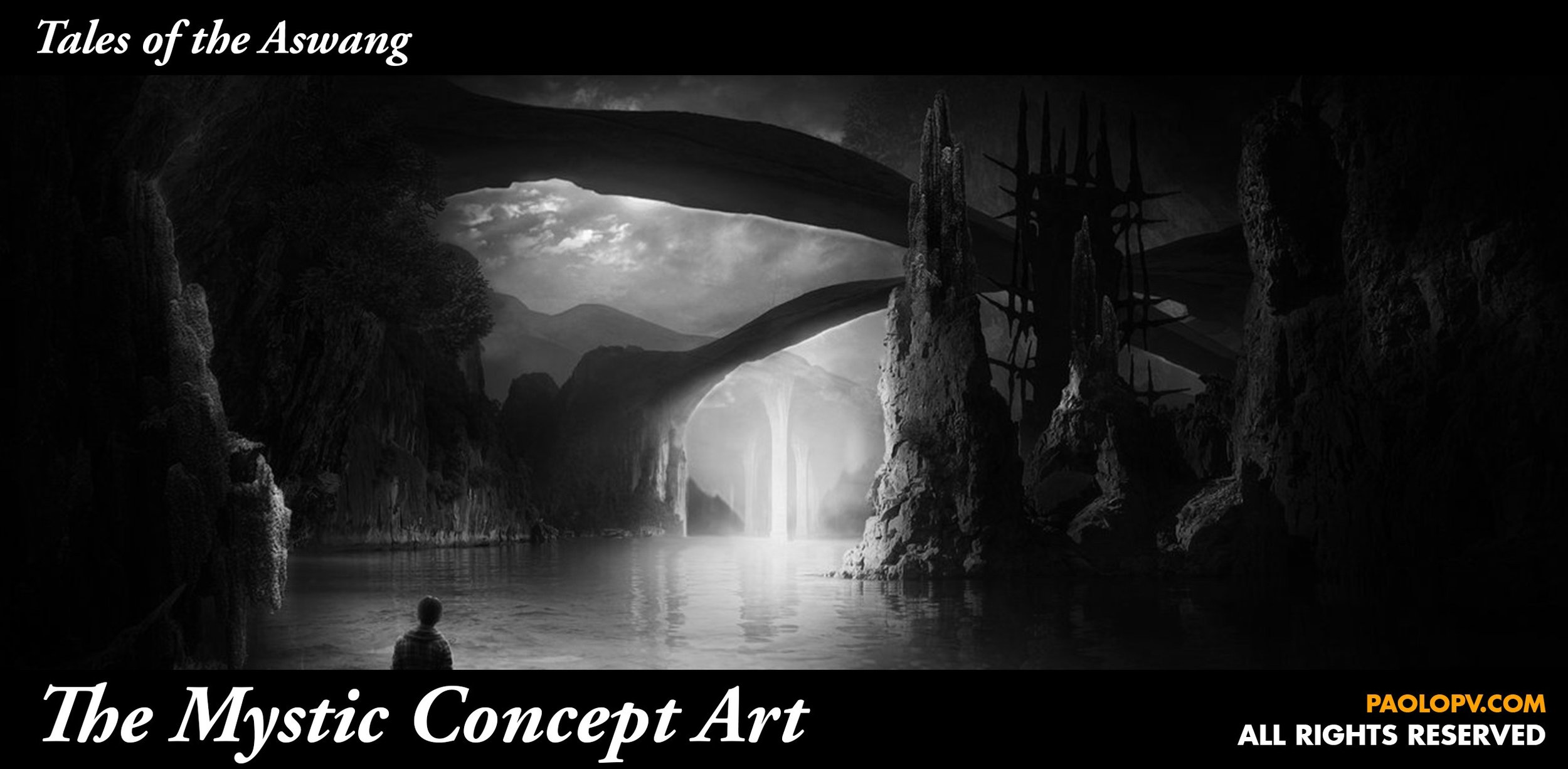
*Click on an Image to see more
The concept art phase of the project began right after the 7th draft of the story was written. There were 3 Phases of concept art that were drawn in 1-2 weeks
An interpretation that took the creature’s description based on the oral stories,
One that was more cartoon-like which was heavily inspired by Disney and Ghibli films
One that merged both influences while picking up something unique to the character like size, weight, and environment.

The Storyboard
The Storyboards were created in just 3 days after finishing the concept art. They were based on an expanded story of several Aswangs, a mischievous young main character who meets a Duwende by the river, and a Kapre who traps him in their world.
The focus during this stage of the project was to prototype the tone of the creatures' relationship with the main character and create a sense of mystery around their world.
Many of these storyboards influenced how the main character interacts with a specific Aswang and how the Aswang relates to others.
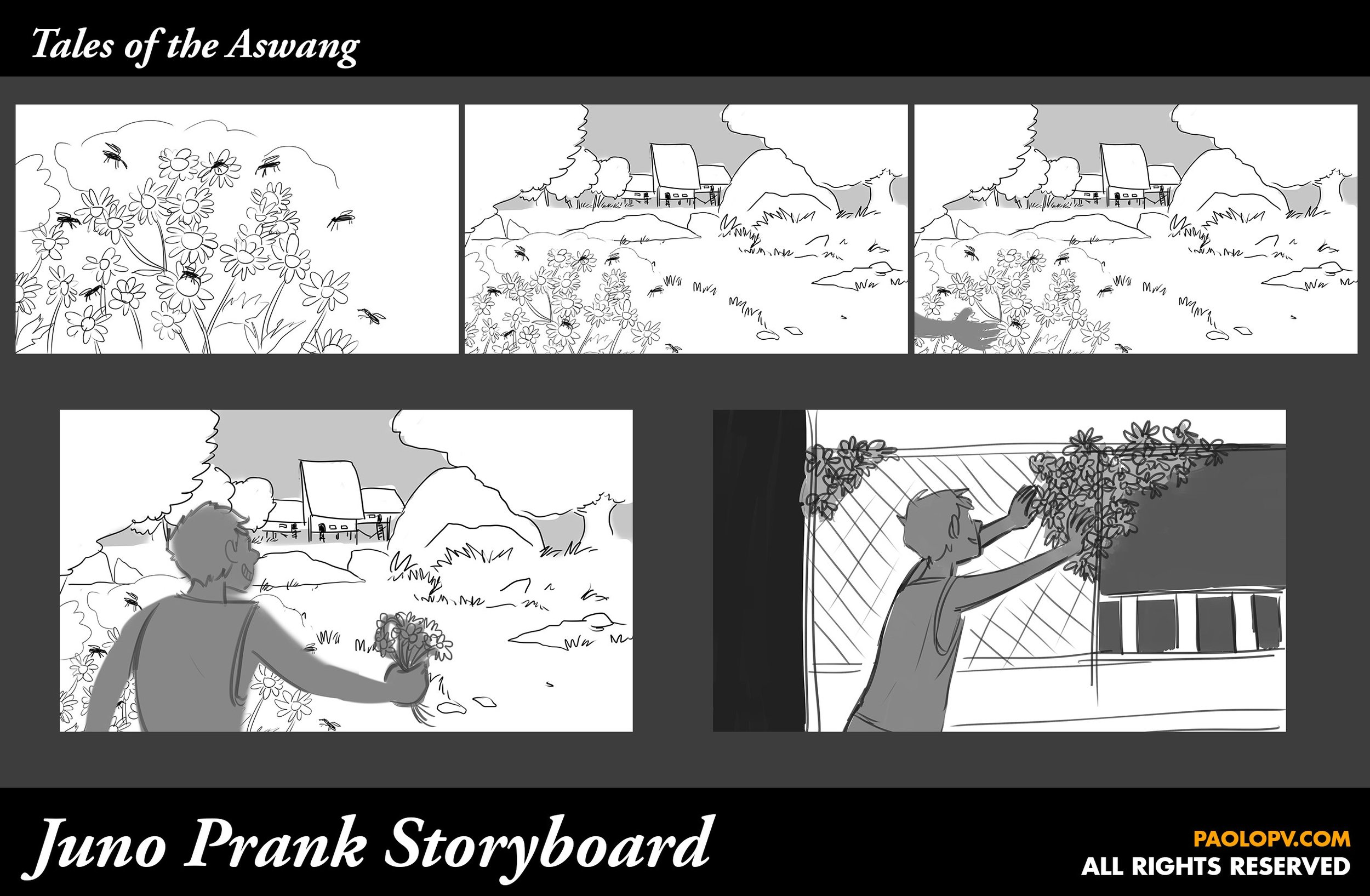
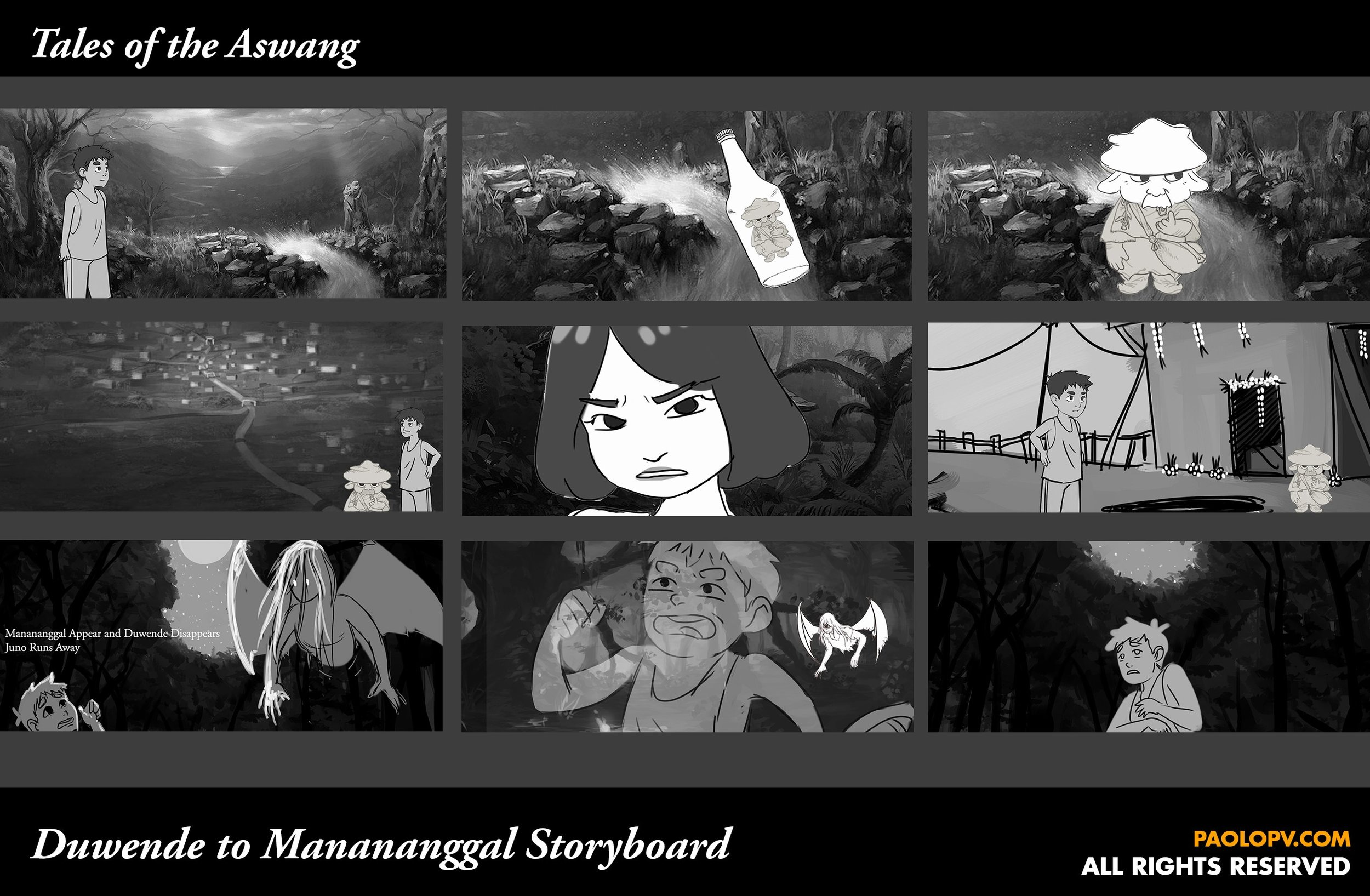

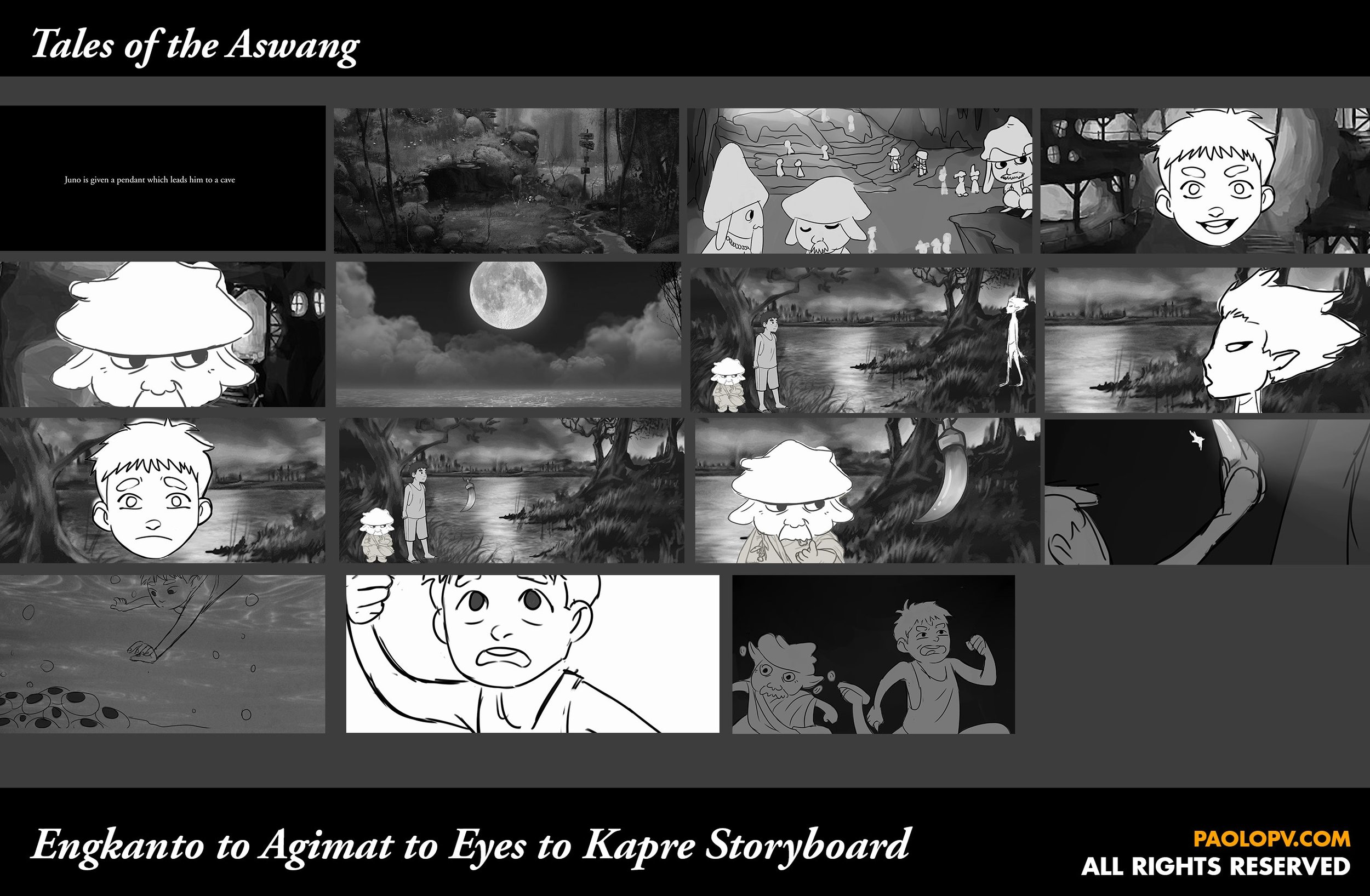
The Animatic
An animatic is a rough version of a movie made by combining storyboard images and sound. In our Thesis class, we showed a 20-minute animatic that I voiced myself. The original version had too many confusing plotlines and unnecessary quests for the main character, so I had to simplify it for the VR experience. I chose to share the Kapre scene because it was one of the few scenes that remained unchanged from the initial idea to the final VR experience. The animatic also had some unused storylines and dialogues.

The New Story
To make it easier for players, I shortened each tale to flow smoothly. Each tale focuses on a different Aswang and brings back another Aswang later in the same environment. Both the monster's own story and a social issue that affects the character's past and present are important. I added the HOMECOMING trope later in the process to allow for outsiders to be introduced to the Aswang culture and reintroduce familiar elements without the need for establishing everything at the beginning. Focus groups liked the new outline, so the project moved on to the detailed level scripts for each level.
Level Scripts
After establishing the foundation for each episode, I determined what actions the player could do at each level and in each environment. This helped me write the dialogue and exposition based on the player's capabilities and determine whether the level would be linear or non-linear.
Detailed scripts were created for Tutorial Level 1 and Tutorial Level 2, which are based on the player's context and capabilities. Tutorial Level 1 is more flexible and non-linear, while Tutorial Level 2 is more structured and linear.
Preview of Tutorial Level 1 and Tutorial Level 2 Scripts

Production
The first stages of production (assets, levels, sound, models) took only 1-2 months. However, the second stages of production (user testing and narrative experience studies that affected the output of the game) took a total of 6 months. Thus ending with the last month of the interactive showcase of the game.
Production Schedule
The production schedule for the game was subdivided into two parts. One for the first semester (Aug-Dec) and another for the second semester (Jan-May).
Level Design
The level design for the game went through several phases, starting with outlining and diagraming. Then, a white wireframe of the level was built digitally and tested for smooth navigation. The distance and scale of objects were measured, and detailed modular assets were created on Maya and assembled for an early polished look. Each layer, from texture to object to NPC, was added and tested for smooth navigation. Sandbox testing was conducted in an isolated area to test various interactions and animations.
Building The Forest
Building The House
Building The Cave
Outline of the Level Building Process

3D Modelling and Animation
Over 70 original 3D models were created for the game using software like Maya, 3DS, MAX, Cinema 4D, and Substance Painter. These models included objects, environmental details, characters, and Aswangs. Motion capture was used to ensure realistic body gestures for character interactions, creating a fully immersive experience. I did the 3D modeling and motion capture over 2 months spread out throughout the year, which was challenging but fun. Seeing the models come alive in the game made the work rewarding. An alpha playtest was conducted to mix the Kapre, 3D assets, and the cave level to test the VR experience.
User Tests
There were over 67 User Testers, subdivided into several sections (listed below) tested the game.
Early Research (What actions in VR are fun?)
Level Testing (How are people motivated to move to a distance)
Narration (Did people get the story or were distracted by the shiny object)
Experience Testing (Do people get dizzy, motivation for story vs visual sickness)
These testers determined a lot on how the game or level was going to be designed and I wanted to make sure that we would have the least amount of dizziness for the player.
Results
After user testing, I discovered a concept called "Visual Convenience". This means that players in VR universes often perceive digital spaces as real-world movement. For example, they may feel motivated to walk to objects that seem far away. However, if the object is nearby, they may feel like they'll be led to new places too quickly. Younger players adapt more easily to new controls, while adults take longer to adjust. Therefore, I prioritize the tutorial level because it serves as a gateway to the game's world.

Sound Design
The sounds in the game are inspired by the sounds of the Island of Mindanao, particularly tribal sounds from Davao City. I chose Mindanao because Luzon's sounds are heavily influenced by its Spanish colonial past.
However, both tribal and colonial sounds are incorporated into the game, contributing to the story of the Aswang. Themes and leitmotifs were considered at the beginning of the project, and each character has a theme that evolves over time as the game progresses.
Voice Acting
For the voice actors in Tales of the Aswang, I wanted them to have a distinct Filipino accent from different islands. Finding voice actors who could capture the accent in both English and Filipino was difficult, as the country's language is a mix of English and Filipino. The game's design choices considered the influence of Western education on the youth, who primarily speak English.
The Aswangs fluently speak both languages, with their native language used to tell their tales. The adults in the game speak a mix of broken English and Filipino, showing their struggle to adapt to English while still wanting to express their emotions in Filipino.
Post-Production
As I began optimizing the game for the showcase, I also prepared marketing assets and demoed the game to several friends and writers from popular media.
Creating the Poster
VIDEOS

MARKETING
Conferences & Festivals
UPCOMING
Unity Developer Day
FINISHED
Games for Change Festival
Cache (Parsons School of Design)
Playtech Fall 2017
Indiecade East 2018
Unfolding (Parsons Thesis Show 2018)
Spring Playtech 2018 [April 14, 2018]
NYU Game Center [April, 2018]
Unfolding (Interactive Showcase) [May 14, 2018]
Unfolding (Symposium) [May 16, 2018]
PUBLISHED ARTICLES
CREDITS
Paolo Villanueva
Creator + Director + Writer+ Animator + Composer + Programmer
Research & Mentorship
Pre-Production & Consultation
Cast


